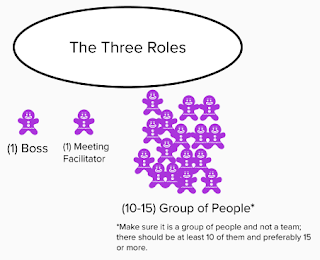The Agile Framework (Parody) - By Dan Greenberg

Agile The Comprehensive Guide What is Agile? There's a new framework in town and it's called Agile. It's very simple, in fact there are only three roles and two ceremonies. Try it and let us know what you think! Agile Has 3 Roles Agile Has 2 Ceremonies Daily Status Update When : Every morning at 9AM Format The Boss receives a status report for each ticket on the group's board e.g. "I made progress on this yesterday and will continue progress today" Anyone who has not yet spoken must now speak up and convince the Boss they are indeed doing work e.g. "Though it is not represented on the board, I did work yesterday and will continue to do work today." The Meeting Facilitator ensures that a status is given for every ticket on the board and that every person in the group has adequately proven that they are working 2. Every-Other




